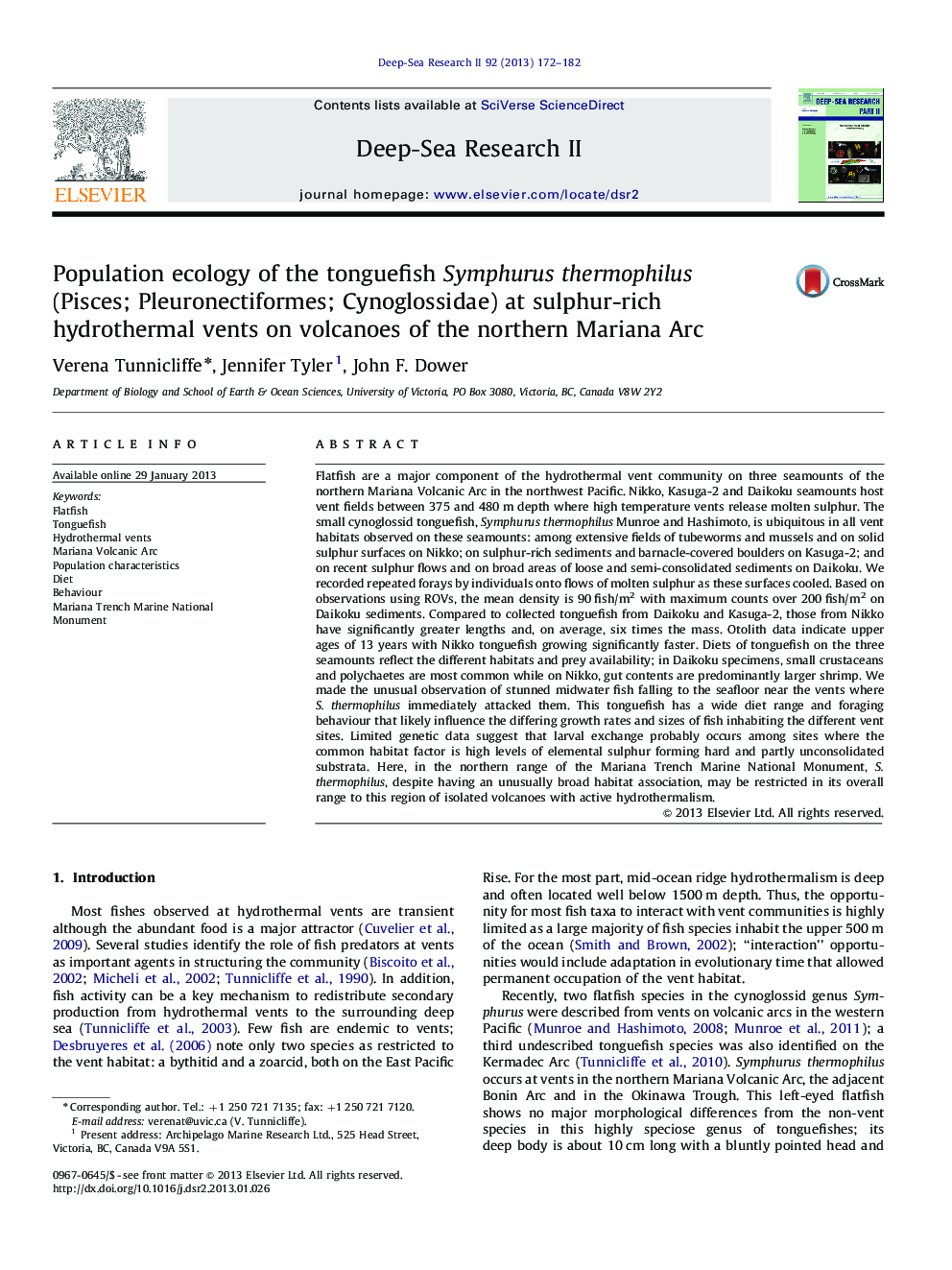| کد مقاله | کد نشریه | سال انتشار | مقاله انگلیسی | نسخه تمام متن |
|---|---|---|---|---|
| 4536586 | 1626447 | 2013 | 11 صفحه PDF | دانلود رایگان |

Flatfish are a major component of the hydrothermal vent community on three seamounts of the northern Mariana Volcanic Arc in the northwest Pacific. Nikko, Kasuga-2 and Daikoku seamounts host vent fields between 375 and 480 m depth where high temperature vents release molten sulphur. The small cynoglossid tonguefish, Symphurus thermophilus Munroe and Hashimoto, is ubiquitous in all vent habitats observed on these seamounts: among extensive fields of tubeworms and mussels and on solid sulphur surfaces on Nikko; on sulphur-rich sediments and barnacle-covered boulders on Kasuga-2; and on recent sulphur flows and on broad areas of loose and semi-consolidated sediments on Daikoku. We recorded repeated forays by individuals onto flows of molten sulphur as these surfaces cooled. Based on observations using ROVs, the mean density is 90 fish/m2 with maximum counts over 200 fish/m2 on Daikoku sediments. Compared to collected tonguefish from Daikoku and Kasuga-2, those from Nikko have significantly greater lengths and, on average, six times the mass. Otolith data indicate upper ages of 13 years with Nikko tonguefish growing significantly faster. Diets of tonguefish on the three seamounts reflect the different habitats and prey availability; in Daikoku specimens, small crustaceans and polychaetes are most common while on Nikko, gut contents are predominantly larger shrimp. We made the unusual observation of stunned midwater fish falling to the seafloor near the vents where S. thermophilus immediately attacked them. This tonguefish has a wide diet range and foraging behaviour that likely influence the differing growth rates and sizes of fish inhabiting the different vent sites. Limited genetic data suggest that larval exchange probably occurs among sites where the common habitat factor is high levels of elemental sulphur forming hard and partly unconsolidated substrata. Here, in the northern range of the Mariana Trench Marine National Monument, S. thermophilus, despite having an unusually broad habitat association, may be restricted in its overall range to this region of isolated volcanoes with active hydrothermalism.
Journal: Deep Sea Research Part II: Topical Studies in Oceanography - Volume 92, August 2013, Pages 172–182